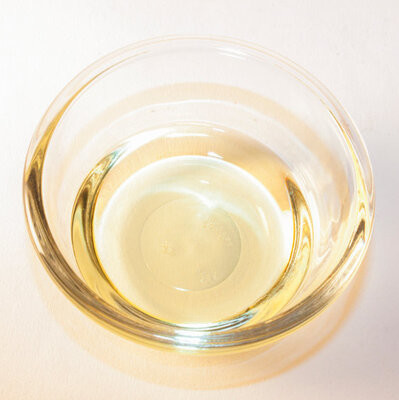Vinegar
Also known as acetic acid or ethanoic acid
What is Vinegar?
Vinegar is a sour-tasting liquid used as a leavening agent, pH regulator, acidulant, preservative, antimicrobial agent and dough improver.1,2
Molasses and alcohols from cereals, grains, and fruits are the basic substrates for making vinegars. The production process depends on the raw material, desired yield, or duration of fermentation. Types of commercially available vinegars:
- White from grain alcohol
- Brown from apple cider
- Balsamic from grape must
Origin
The word vinegar comes from the Old french expression “vin agre” which means sour wine.3 Production of vinegar was practiced thousands of years ago as evidenced by the traces found in Egyptian urns dating to 3000 BC. Its production by fermentation processes was discovered by the French Chemist, Louis Pasteur, in 1864. 3
Function
Vinegar may have several functions in baked goods:2
- Leavening agent: aids in leavening when used with a base (baking powder) to produce carbon dioxide.
- Acidulant: decreases pH aiding in meringue stabilization.
- Antimicrobial agent or preservative: helps control mold and bacterial growth by reducing the pH.
- Dough improver: improves extensibility and stretchiness of the gluten network.
- Sanitizing agent: used in sanitizing operations of stainless steel equipment.
Nutrition
Typical nutritional profile of commercially available fruit vinegar per 100 g:
| Component | Units |
|---|---|
| Water | 73 – 98 % |
| Total Solids | 2 – 27 % |
| pH | 2.5 – 3.6 % |
Commercial production
Vinegar is made by Acetobacter acetii fermentation of alcohols. The most commonly used method is submerged fermentation:3
- Conditioning: alcohol is placed in a heated stainless steel tank fitted with an aerator with continuous oxygen stream pumped in.
- Fermentation: Nutrients are added to the tank maintained at 26 -38 oC (80 – 100 oF) to enhance the growth of Acetobacter acetii
- Vinegar production: after several hours alcohol is transformed into vinegar.
- Filtering: using a plate and frame filtering system to remove
- Dilution: vinegar is diluted with water to the appropriate concentration.
- Bottling
- Packaging
Application
In baking, it is commonly used as a leavening agent in combination with baking soda.
Implications of vinegar usage in baked goods:2
| Baked Good | Usage Level | Effect |
|---|---|---|
| Bread | 0.125% (as acetic acid) by flour weight |
|
| Cake | 0.25 % |
|
| Strudel Dough | – |
|
| Meringue | – |
|
Considerations when adding vinegar to baked goods:2
- FDA limits the use of vinegar (acetic acid) to 0.25% of the weight of the product.4
- Balsamic vinegar may drastically change the flavor profile of baked goods when used in large quantities.
- If used at high levels, vinegars may impart an unpleasant sour taste.
- When using vinegar and baking soda as a baking powder substitute, additional water may be required.
- A substitute of buttermilk can be made by adding 1 tablespoon of vinegar to a cup of whole fluid milk.
Regulations
Vinegar (E 260) or acetic acid is considered GRAS by the FDA when following Good Manufacturing Practices, and has an established maximum limit in baked goods of 0.25% of the product.5
In the EU, vinegar is considered safe as well, according to the EU Commission Regulation No 1333/2008.6
References
- Smith, J, & Hong-Shum,L. Food additives data book. 2 nd ed., John Wiley & Sons, 2011
- Figoni, P. I. How Baking Works: Exploring The Fundamentals Of Baking Science. 3rd ed., John Wiley & Sons, 2011.
- Hailu, S, Admassu,S and Jha,Y.K. “Vinegar production technology–An overview.” Beverage & Food World ,2012.
- U.S. Department of Agriculture, Agricultural Research Service. FoodData Central, 01 April 2019.https://fdc.nal.usda.gov/fdc-app.html#/food-details/172237/nutrients. Accessed 26 May 2021.
- Food and Drug Administration (FDA). US Department of Health and Human Services. CFR Code of Federal Regulations Title 21, Part 184 Direct Food Substances Affirmed As Generally Recognized As Safe,https://www.accessdata.fda.gov/scripts/cdrh/cfdocs/cfcfr/CFRSearch.cfm?fr=184.1005 , Accessed 25 May 2021.
- European Commission (EC). Regulation (EC) No 1331/2008 of the European Parliament and of the Council of 16 December 2008 establishing a common authorisation procedure for food additives, food enzymes and food flavourings .Official Journal of European Communities, 16 Dec 2008.


